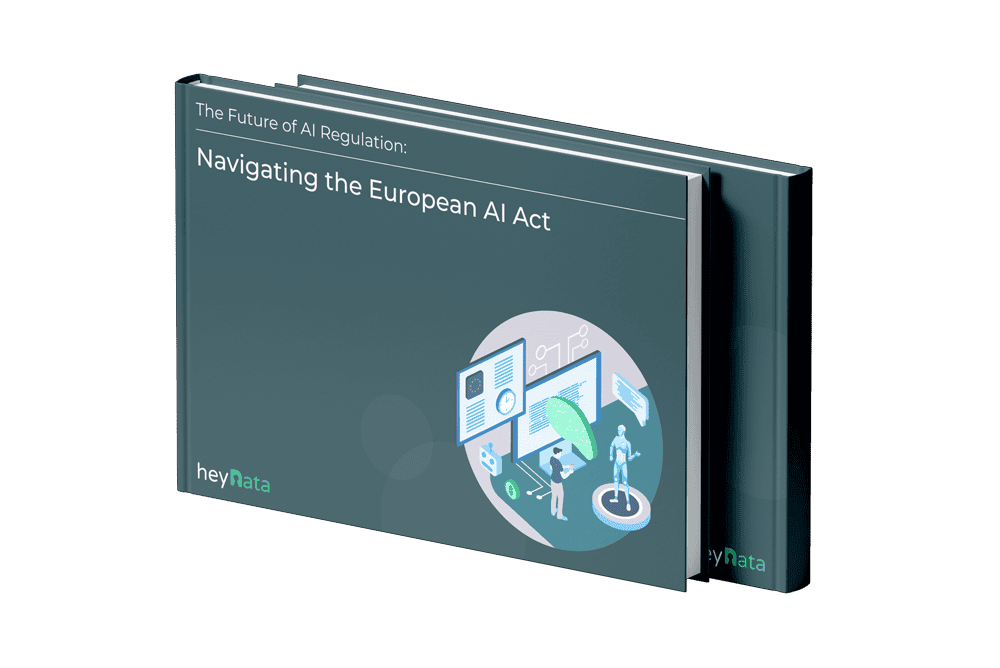
Whitepaper: EU AI Act

Top 3 Cybersecurity Predictions for Business in 2025

2025 is expected to be largely dominated by discussions around artificial intelligence (AI) in cybersecurity. This year promises both unprecedented challenges and opportunities for businesses and individuals alike. These predictions highlight the challenges and opportunities businesses face in the ever-evolving landscape of cybersecurity. Implementing a proactive and holistic approach to cybersecurity will safeguard organizations' assets, reputation, and customer trust in 2025 and beyond.
Here are the top predictions shaping the cybersecurity landscape for businesses this year:
Table of Contents:
1. AI-Powered Security Risks
The increasing adoption of generative AI in businesses introduces new risks, emphasizing the urgent need for robust privacy-preserving features and corporate AI solutions. The popularity of Large Language Models (LLMs) like ChatGPT, Google Bard, now Gemini, and others raises concerns about a significant risk of unintentional data exposure and security risks such as training data poisoning, sensitive company information disclosure, and insecure plugin design accidentally exposing confidential data to third parties. To address these challenges, businesses must prioritize the development of robust privacy-preserving features and implement stringent security protocols for AI-driven systems. From 2025, companies in the EU will also be obliged to put both used and self-developed AI systems through their paces. If risks are identified in AI models, they should no longer be used or developed in this form. The recently introduced EU AI law provides for a corresponding review, the first restrictions of which will be binding from 2025.
Related topic: SMEs in the AI Era: The Impact of EU AI Act

Whitepaper: EU AI Act
2. Threats from Deep Learning Systems
Researchers have developed deep learning systems capable of accurately extracting data via keyboard keystrokes, achieving high accuracy rates of 95%, potentially compromising sensitive information like passwords or private messages. In their study, the researchers revealed that their system achieved an unprecedented accuracy of 93% when trained on keystrokes gathered from the widely used video conferencing software Zoom. A recent study also shows deep learning's superiority, with reported accuracy peaking at 98.57% through transfer learning on models like AlexNet and ResNet. These models can also decode keyboard sounds and steal data, highlighting the potential risks associated with keyboard vulnerabilities. Researchers have also uncovered a multitude of threats posed by deep learning systems that extend well beyond keystroke extraction. These include the development of stealthy malware capable of evading traditional detection methods like DeepLocker. This malware can evade traditional detection by using deep neural networks to disguise its malicious payload and only deploy ransomware on specifically targeted victims. Deepfake technology powered by deep learning enables the creation of hyper-realistic fake audio, images, and videos for misinformation campaigns and identity theft. Advanced neural network models can precisely target cyber-attacks by learning patterns and vulnerabilities in systems. Ultimately, the targeted use of AI makes it much easier to evaluate and analyze any kind of data obtained - for tracking, blackmail attempts, cyberattacks, or other unlawful use. What was previously only possible for a few due to the complexity and resources required can now also be easily scaled up for criminal activities. By acknowledging and addressing these challenges proactively, organizations can better safeguard against the evolving landscape of deep learning-driven cyber threats and protect sensitive information from exploitation. For good reason, the EU is introducing stringent cybersecurity requirements for larger companies in many sectors and, in particular, system-critical infrastructures with the NIS 2 directive.
3. Cybersecurity Workforce Shortage
The persistent shortage of cybersecurity professionals remains a significant concern, with an estimated workforce gap of under 4 million reported in late 2023. This shortage is expected to lead to more security vulnerabilities and gaps if not addressed through enhanced training and recruitment efforts. Organizations are facing challenges due to cost-saving cutbacks, layoffs, and hiring freezes, impacting cybersecurity teams disproportionately. Skills gaps in areas like cloud computing security, AI/ML, and zero-trust implementation are also prevalent, with organizations struggling to find people with the right skills. By prioritizing cybersecurity education and training programs, businesses can bridge the skills gap and strengthen their defense against cyber threats.
Strengthening Cyber Defenses and Data Privacy
Comprehensive Employee Training:
Human error remains one of the leading causes of security breaches. Depending on the study, more than half to almost all data breaches are due to human error, such as poorly secured logins and devices, incorrect security settings, unauthorized use of private accounts, loss of physical data carriers, lack of updates and backups, etc. Therefore, businesses must invest in comprehensive data security training programs to educate employees about common threats, phishing scams, and best practices for safeguarding sensitive information. Implementing heyData's employee training program can enhance employee awareness and promote GDPR compliance, reducing the likelihood of data breaches, and empowering businesses to mitigate the risk of human error-driven security breaches to uphold data privacy standards with confidence. In many companies, these simple-sounding steps are only implemented half-heartedly during the initial onboarding phase, but without repetition and regular updates, they will not lead to the desired success.
Related topic: Safeguarding User Privacy in the Digital Age: Personal Data and AI Training Ethics
Browser Security Innovation:
Browser security innovation, particularly browser isolation technology, will be a focal point for IT and security vendors in 2025. This technology contains web browsing activities within isolated environments to enhance security.
Budgetary Awareness:
With cybersecurity spending increasing by 14% in 2024, organizations must recognize the need to allocate resources effectively to bolster cybersecurity defenses. Proactive measures, collaboration with technology teams, and strategic decision-making are essential for maximizing cybersecurity investments and minimizing risks. Engaging with internal or external Data Protection Officers (DPOs) can provide essential data privacy training, helping businesses comply with GDPR laws and identify potential data protection risks.
Continuous Monitoring and Threat Intelligence:
Advocate for the implementation of continuous monitoring and threat intelligence programs to detect and respond to cyber threats in real time. Highlight the value of leveraging advanced security analytics and threat intelligence feeds to stay ahead of evolving cyber threats and trends.
Related topic: Compliance Success: Why Vendor Risk Management is a Must-Have for SMEs
Vendor Risk Management:
Vendor risk management empowers organizations by ensuring they understand the third-party vendors they collaborate with, enabling them to make informed decisions and establish strong partnerships. Investing in compliance platforms like heyData's Vendor Risk Management Tool streamlines VRM processes, aligning with compliance standards and enabling proactive risk mitigation. Active monitoring ensures that trustworthy third-party providers are used and that the right practices are implemented to protect sensitive data. By investing in heyData, businesses save valuable time and resources while averting potential legal issues through effective risk prevention and management. Learn more about heyData’s vendor risk management here.
Conclusion on Cybersecurity Trends 2025
In conclusion, the cybersecurity predictions for 2025 highlight a dynamic landscape shaped by the advancements and challenges posed by AI, evolving technologies, workforce shortages, and emerging threats in critical sectors like cryptocurrency. Organizations need to adapt proactively to these trends to bolster their cyber defenses effectively.
As businesses navigate the complexities of AI adoption, heyData offers an AI solution for risk detection and compliance. With cutting-edge tools and expert legal support, heyData empowers organizations to embrace AI confidently. If you have any questions about new requirements such as NIS 2, please do not hesitate to contact us for non-binding advice on how your company can easily and simply meet the strict guidelines and demonstrate compliance.
Important: The content of this article is for informational purposes only and does not constitute legal advice. The information provided here is no substitute for personalized legal advice from a data protection officer or an attorney. We do not guarantee that the information provided is up to date, complete, or accurate. Any actions taken on the basis of the information contained in this article are at your own risk. We recommend that you always consult a data protection officer or an attorney with any legal questions or problems.


